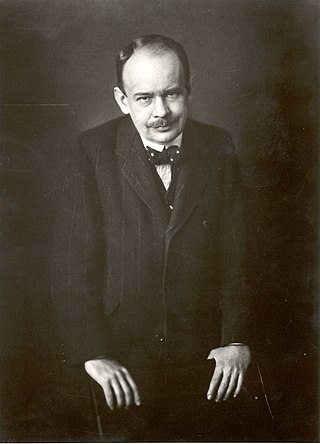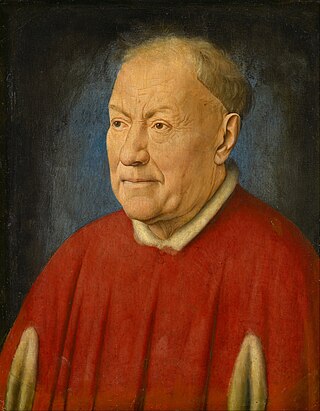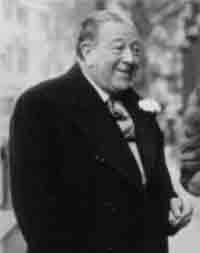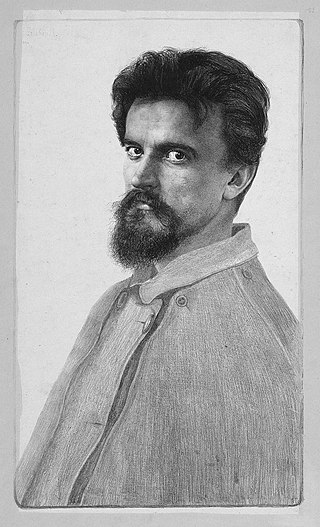Related Research Articles

Pieter Bruegelthe Elder was the most significant artist of Dutch and Flemish Renaissance painting, a painter and printmaker, known for his landscapes and peasant scenes ; he was a pioneer in making both types of subject the focus in large paintings.

Oskar Kokoschka was an Austrian artist, poet, playwright, and teacher best known for his intense expressionistic portraits and landscapes, as well as his theories on vision that influenced the Viennese Expressionist movement.

Max Dvořák was a Czech-born Austrian art historian. He was a professor of art history at the University of Vienna and a famous member of the Vienna School of Art History, employing a Geistesgeschichte methodology.

The Hagenbund or Künstlerbund Hagen was a group of Austrian artists that formed in 1899. The group's name derived from the name Herr Hagen, the proprietor of an inn in Vienna which they frequented.

Max Jakob Friedländer was a German museum curator and art historian. He was a specialist in Early Netherlandish painting and the Northern Renaissance, who volunteered at the Kupferstichkabinett Berlin in 1891 under Friedrich Lippmann. On Lippmann's recommendation, Wilhelm von Bode took him on as his assistant in 1896 for the paintings division. He was appointed deputy director of the Kaiser Friedrich Museum under Bode in 1904 and became director himself from 1924 to 1932, working on his history From Van Eyck to Bruegel and the 14-volume survey Early Netherlandish Painting. In 1933 he was dismissed as a "non-Aryan" and in 1939 had to move to Amsterdam as a result of being a Jew. He attained the rank and title of geheimrat under the German Empire. He also donated several works to the collection and worked in the art trade as an advisor, to Hermann Göring among others.
The Vienna School of Art History was the development of fundamental art-historical methods at the University of Vienna. This school was not actually a dogmatically unified group, but rather an intellectual evolution extending over a number of generations, in which a series of outstanding scholars each built upon the achievements of their forerunners, while contributing their own unique perspectives. Essential elements of this evolution became fundamental for modern art history, even if the individual methods can today no longer claim absolute validity.

Netherlandish Proverbs is a 1559 oil-on-oak-panel painting by Pieter Bruegel the Elder that depicts a scene in which humans and, to a lesser extent, animals and objects, offer literal illustrations of Dutch-language proverbs and idioms.

Joseph Leo Koerner is an American art historian and filmmaker. He is currently the Victor S. Thomas Professor of the History of Art and Architecture and, since 2008, Senior Fellow at the Society of Fellows at Harvard University. Specializing in Northern Renaissance and 19th-century art, Koerner is best known for his work on German art and Early Netherlandish painting. After teaching at Harvard from 1989 to 1999, he moved to Frankfurt, where he was Professor of Modern Art History at the Goethe University, and to London, where he held professorships at University College London and the Courtauld Institute before returning to Harvard in 2007. His feature film The Burning Child, a documentary combining personal and cultural history, was released in 2019.
Otto Pächt was an Austrian art historian and one of the representatives of the second wave of the Vienna School of Art History. He mostly wrote on the medieval and Renaissance art of Europe. An exile from the Nazis, he taught in England and United States, before returning to Austria in 1963.

The Portrait of Cardinal Niccolò Albergati is a painting by early Netherlandish painter Jan van Eyck, dating to around 1431 and now in the Kunsthistorisches Museum of Vienna, Austria.

The Peasant and the Nest Robber is an oil-on-panel painting by the Netherlandish Renaissance artist Pieter Bruegel the Elder, painted in 1568. It is in the Kunsthistorisches Museum in Vienna.

Count Antoine Seilern was an Anglo-Austrian art collector and art historian. He was considered, along with Sir Denis Mahon, to be one of a handful of important collectors who was also a respected scholar. The bulk of his collection was bequeathed anonymously to the Courtauld Institute of Art. Known as the "Princes Gate bequest", most of it is on display at the Courtauld Gallery in London.
Theodore Fried was a Hungarian artist, who worked in Vienna, Paris and New York.
Hans Tietze was an Austrian art historian and member of the Vienna School of Art History.

Study for Cardinal Niccolò Albergati is a silverpoint drawing attributed to the Early Netherlandish painter Jan van Eyck, made in preparation for his Portrait of Cardinal Niccolò Albergati of 1431. Niccolò Albergati was a diplomat working under Pope Martin V. He met van Eyck during a peace congress in Antwerp, when the artist portrayed him. It is held in the collection of the Staatliche Kunstsammlungen in Dresden.

Karl Mediz was an Austrian landscape and portrait painter. Many of his works are in the Symbolist style.

Margarete Hamerschlag was an Austrian artisan, painter, author and illustrator.

John Quincy Adams was an Austrian genre and portrait painter of American ancestry.

Charles Wilda, originally Karl was an Austrian Orientalist painter. He was the elder brother of the painter, Gottfried Wilda.
References
- ↑ Dictionary of Art Historians.
- ↑ "Cuvelier", p. 135.
- ↑ http://www.malerkolonie.at/ for details of Zinkenbacher Malerkolonie
- ↑ "Home". Rubenianum.be.
- ↑ http://www.unie.ac.at/geschtegeschitet/austellungmenu%5B%5D for details of Art Historians connected with the Department of Art History in Vienna forced to leave at the time of the Anschluss
- ↑ Wendland, Ulrike. Biographisches Handbuch deutschsprachiger Kunsthistoriker I'm Exil: Leben und Werk der under den Nationalsozialismus verfolgten und vertriebenen Wissenschaftler. Munich: Saur, 1999
- ↑ Times Obituary 7 December 1984
- ↑ E. H. Gombrich Fritz Grossmann (obituary). In: Burlington Magazine, 127, June 1985
- ↑ The Fritz Grossmann Collection.
- ↑ Arnbom Marie-Theres et al., Bilder aus den Koffer: Die Sammlung Fritz Grossmann und die wiederentdeckung von Theodor Fried. Austellung Museum Zinkenbacher, 13 Juli bis 13 Oktober 2013. St Gilgen.